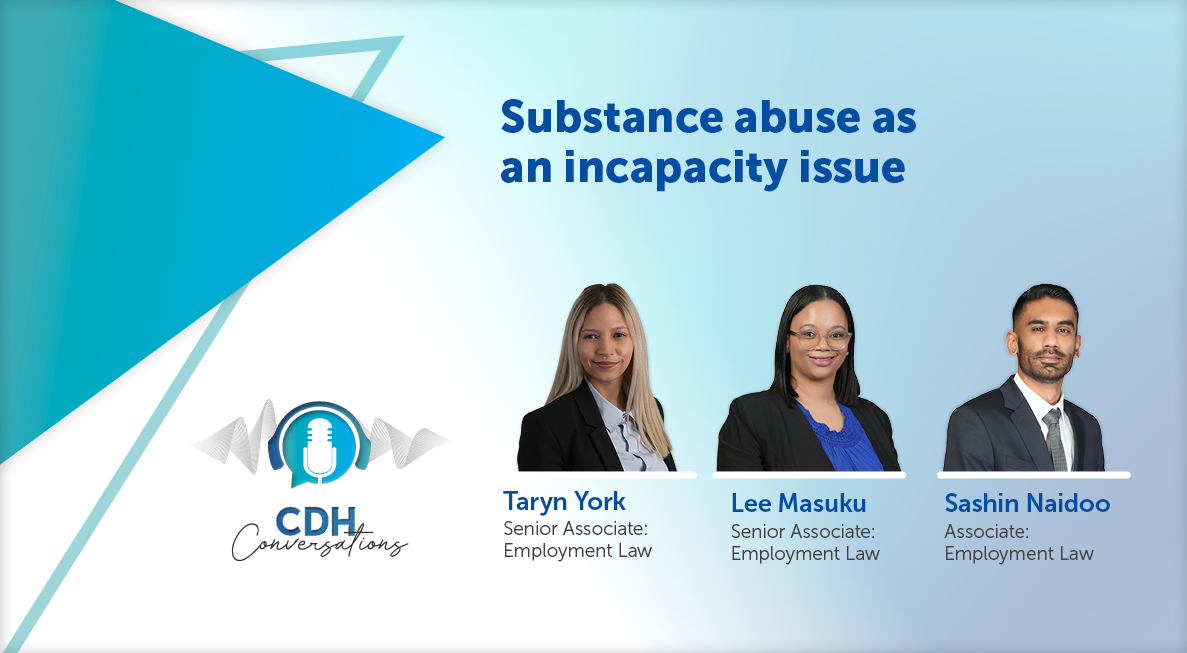Inability to pay under Kenya’s Insolvency Act
At a glance
- Companies facing financial distress in Kenya may engage in the dispute resolution process or explore alternative dispute resolution (ADR) methods like mediation to resolve insolvency challenges without immediate liquidation.
- Directors can avoid insolvency proceedings by proactively using alternative dispute resolution strategies, protecting business relationships and avoiding public winding up petitions.
- Insolvency matters in Kenya typically proceed through court processes, though ADR remains a viable alternative.
- Independent business review plays a key role in insolvency cases, examining a company’s financial position to establish genuine distress and support effective dispute resolution.
- In insolvency situations, insurance defence lawyers and legal insurance solutions become crucial for protecting companies, directors, and creditors involved in complex dispute resolution processes.

Inability to pay under Kenya’s Insolvency Act
Podcast
Inability to pay under Kenya’s Insolvency Act
Podcast
In this episode of CDH Conversations, Desmond Odhiambo and Faith Wamuyu demystify what it really means when a company is said to be “unable to pay its debts” under Kenya’s Insolvency Act. We break down how courts assess insolvency, what the cash flow and balance sheet tests really involve, and how even a temporary cash crunch can spiral into a full-blown insolvency petition if you don’t act fast.
Join them as we explore strategies companies can use to navigate temporary financial strain before it's too late."
Click here to listen to the podcast.
Transcript
Faith Wamuyu: Welcome to CDH Conversations podcast, where we'll be speaking about navigating insolvency and specifically understanding the concept of inability to pay debt within the insolvency context.
My name is Faith Wamuyu. I'm a Trainee Advocate at CDH Kenya. In this conversation, we'll be discussing the definition of insolvency and explore the statutory circumstances that indicate inability to pay debt. We'll also discuss what failure to satisfy statutory demand means for a company. We'll also look into the practical ways in which company directors can strategically handle financial difficulties, as well as how these company directors can demonstrate that financial distress is temporary during insolvency proceedings.
Finally, we'll look at what courts consider in determining whether a company is indeed insolvent.
Joining me for this discussion is Desmond Odhiambo, a Partner in the Dispute Resolution department here at CDH. Desmond, thank you for your time today to discuss what inability to pay debt means for a company and how these companies can navigate financial difficulties.
To begin the discussion, perhaps you can tell us what insolvency means and what legal parameters are used in determining whether a company is insolvent.
Desmond Odhiambo: Thank you, Faith. There are two tests for determining whether a company is insolvent under the Insolvency Act. The first broad test is described as the cashflow test, and then the second test is the balance sheet test. The cashflow test is where the company is unable to meet its financial obligations as and when they fall due in the normal course of business. So, for example, if the company is unable to pay invoices that it has received from its suppliers, or it is unable to pay salaries of the staff, or it is unable to pay its rent, the company may be regarded as insolvent.
Then for the balance sheet test is the overall financial position of the company. When you look at the assets of the company as compared to its liabilities. So, for example, if its liabilities exceed its assets, it may be considered unable to pay its debts, even if it currently may be able to meet some of its immediate obligations.
So these two tests are useful for both the company as well as the courts in determining whether it is insolvent.For the company the test is useful, to enable the directors know whether the company is technically insolvent so that they can take corrective measures, or even make a decision to voluntarily liquidate the company and the reasons for this is that directors have a responsibility and a duty imposed on them by the Insolvency Act, not to trade wrongfully. . What this means is that if they know using those tests that the company is unable to pay its debts, then they have a responsibility not to continue piling up additional debt knowing very well that creditors would not be able to be paid. The test also as mentioned, is useful for the courts in determining whether or not to wind up a company. And this becomes crucial when a creditor decides to file a petition to wind up a company and the creditor has been provided with a right, under the Insolvency Act, to enforce payment of its debt through initiating a liquidation of a company, the creditor must, first of all, present a statutory demand. A statutory demand is where the creditor formally makes a demand for payment of its outstanding invoice or facility, or outstanding debt to be paid within 21 days and if that debt is not paid within 21 days, it then has the right to present a winding up petition. Of course, there are certain parameters the court will consider in determining whether the winding up petition should proceed.
We have a case in point In re Liquidation of Put Sarajevo General Engineering Company Limited where the company's creditor instituted insolvency proceedings against the company after they served it with statutory demand. In that case court considered: Did the company pay? Did it satisfy that statutory demand within the 21 days? The court held that because the company had not paid the statutory demand and the debt had remained unsatisfied, then it was a just case for liquidation of the company.
The threshold for the amount that can entitle a creditor to present a statutory demand is one hundred thousand so anything from one hundred thousand and above would entitle a creditor to present a winding up petition, which in my views is quite a low threshold. I think it should be much higher, but that's how the law has been phrased at the moment.
Faith Wamuyu: We see from that case that the court's decision was based on the fact that the demand had remained outstanding.
So, does it mean that failure to satisfy a statutory demand leads to an automatic declaration of insolvency?
Desmond Odhiambo: That's a good question. It's not an automatic declaration of insolvency. What it means is that if a company has failed to pay within those 21 days, it's a strong indication of financial distress and the burden now shifts to the debtor company to show that it's able to pay. That is what is in legal terms is describes as a presumption of insolvency. With that presumption, the company is now put on the defense to show that it's able to pay. All the creditor has to prove, to proceed is that they presented a statutory demand and it has not been paid. Then the court will be like, okay, debtor company, , explain whether or not you're able to pay. So, it's not an automatic declaration; it's just a presumption of insolvency.
Once there's that presumption of insolvency, some of the factors that the court will consider is first and foremost whether the debt is disputed. If there'san argument as to, for instance, how much is due, then that is not a case that should proceed for determination on whether to wind up a company that would be determined in a different forum. If there is a dispute as to the rights and obligations under the contract. For instance, one party says you did not meet the deliverables of the contract, and hence I'm not paying you,then that is not a case that proceed for a winding up petition. You must also remember that when a winding up petition is presented, it has serious consequences on a company. The petition will be advertised in the press and that can haveserious reputational implications on a company.
Even the debtor company itself can apply to set aside the statutory demand on the basis that the debt is disputed. The other factor that the court will consider iswhether there's an existing repayment plan or a compromise with the creditors, it would look to see whether there has been engagement between the debtor company and the creditors oncompromising the debt. So, if there have been such engagements, then it's a consideration upon which the court can say, there's no need to wind up the company. Why don't you explore this out of court-settlement provisions becausewinding up a company has vast consequences on the financial ecosystem.
Those are some of the factors that the court will consider. The mere fact that the statutory demand has not been paid within the 21 days does not lead to automatic declaration of insolvency.
Faith Wamuyu: Indeed. Thank you, Desmond. To add onto that, the courts will also apply both the balance sheet and the cash flow tests in evaluating the company's ability to pay its debts.
This enables the court to have a comprehensive understanding of the company's financial situation. So, what this means is that if a company can convincingly demonstrate to the court that its inability to pay is just temporary and that it has a reasonable expectation of receiving future payment, then the court might hesitate to order immediate liquidation of the company.
Conversely, if the balance sheet indicates that your liabilities exceed your assets, it strengthens the argument that the company is unable to pay debt,even if you are currently managing obligations or even when you claim that the cashflow issue is just temporary. In the alternative, if your assets significantly outweigh the liabilities, this can support the argument that your current inability to pay a specific debt is indeed temporary, especially if it is linked to a disputed debt or to short term liquidity issues.
Desmond Odhiambo: Absolutely. You've rightfully saidit's a holistic view of the business that the court will be considering just to assess whether there's a fundamental inability to meet financialobligations. It's not just as, as simple as I presented my statutory demand, it has not been met, therefore please wind up a company. The court will have a holistic assessment.
Faith Wamuyu: Thanks, Desmond. I'm sure our listeners are curious to know if there are any steps that company directors can take once or if they're issued with our statutory demand so as to prevent facing insolvency proceedings.
Desmond Odhiambo: Yes. So once a company receives a statutory demand, they have to be proactive to address it. It's not your typical demand letter. There are serious consequences if you do not address the statutory demand immediately because, after the 21 days, the creditor can proceed to advertise that it intends to liquidate the company and invite other creditors, for instance, to join into that petition.
That advertisement has adverse reputational consequences on the company. So what directors should do, for instance, the debt is disputed on whatever grounds, maybe the rights and obligations in the contract they have a strong and substantial issuethat they would like to be addressed, then they have to take the immediate step to apply to set aside the statutory demand and tell the court that the debt is disputed. On the other hand, if the debt is not disputed, so there's no issue as to the amount of the debt, and the company agreesthe debt is due, then what it should now consider doing when presented with that is looking at how it can improve its cashflow situation to satisfy that debt and engage with the creditor on the measures that it can take to satisfy that debt. For example a company can look to liquidate some of its assets to be able to raise funds to meet that debt and it canengage the creditor and let the creditor know that yes, in as much as we do not dispute your invoice and in as much as we have some cashflow challenges, it's only temporary . Then a creditor is willing to, for instance, not proceed with the statutory demand. This is crucial where you have multiple creditors. If directors are aware that this is not an isolated incident, it's a good opportunity to gather all creditors together and say, we knowyour invoices are due and we have cashflow challenges, but this is the plan that we have, and some of the items it can have on its plan is to renegotiate the payment period for those debts, or for instance, inform the creditors that you've made arrangements for additional financing so that you can be able to meet those payments. To do this, especially where you have multiple creditors, it is useful to engage a financial advisor who can conduct an independent business review and come up with a restructuring plan that can be presented to creditors.
The Insolvency Act has provisions wherebyif you're presented with a statutory demand, you can go to the court and seek a pre insolvency moratorium, whereby you can seek 30 days for a freeze on enforcement on any debt. That would freeze the statutory demand, it would stop a landlord from evicting and would crucially give the financial advisor time to come up with a restructuring plan, which it can discusswith the creditors as a whole on how to turn around the business. It's important for directors to be proactive in that regard.
Faith Wamuyu: So, in the likely scenario that the company is unable to explore theses mitigating options and the creditor moves ahead to institute the insolvency proceedings, what possible defences does the company have?
Desmond Odhiambo:, In such a scenario where it has been unable to compromise the debt and it's now proceeding for determination by the court evidence is key. It's not enough to merely state that it's a temporary cash flow situation and the company has the financial ability to pay the debts. The court will be looking to see, for instance audited financial statements showing that your assetsexceed your liabilities. Do you have contracts showing that you are about to receive an injection of funds into the business? Do you have loan agreements or Term sheets to show that there's some additional financing in the pipeline? Evidence is key to be able to persuade the court that this is not a situation for liquidating the company.The courts will be very willing to consider such factors because liquidating a company has serious ramifications on the financial ecosystem but the court will also not hesitate to wind up a company where there's lack of evidence of financial capacity to meet its debt because it is also in the public interest for the creditors to receive their payments and where the companies unable to meet those payments thenin such circumstances, liquidating the companies is the best option to be able, at least, to satisfy part of the outstanding debt, if not all of it.
Faith Wamuyu: Well, thank you, Desmond. That brings us to the end of our conversations today. Thank you for finding time to engage in this conversation.
And to our listeners, thank you for joining us, and we hope that the session has equipped you with valuable insights on what inability to pay debt means for company. In case you have any questions, please feel free to contact CDH Kenya.
The information and material published on this website is provided for general purposes only and does not constitute legal advice. We make every effort to ensure that the content is updated regularly and to offer the most current and accurate information. Please consult one of our lawyers on any specific legal problem or matter. We accept no responsibility for any loss or damage, whether direct or consequential, which may arise from reliance on the information contained in these pages. Please refer to our full terms and conditions. Copyright © 2025 Cliffe Dekker Hofmeyr. All rights reserved. For permission to reproduce an article or publication, please contact us cliffedekkerhofmeyr@cdhlegal.com.
Subscribe
We support our clients’ strategic and operational needs by offering innovative, integrated and high quality thought leadership. To stay up to date on the latest legal developments that may potentially impact your business, subscribe to our alerts, seminar and webinar invitations.
Subscribe




